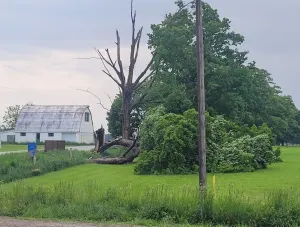
Living shoreline provides living lesson for P.E.I. property owners, groups
A shoreline protection project along the Hillsborough River in Charlottetown is giving property owners and watershed groups a better understanding of nature-based ways to deal with coastal erosion.
Organizers call it a living shoreline — because it uses native plants, hay bales and brush to reinforce the shore, rather than concrete blocks or rocks. The demonstration project near the Queen Elizabeth Hospital was built in 2021.
DON'T MISS: Show love for your lake by creating and maintaining healthy shorelines
Volunteers from 10 watershed groups across the Island have prepared it for the fall and winter storm season — part of the ongoing maintenance projects like it require.
"We like to talk about how this is a long-term process," said Emma Doucette, co-ordinator of Ellen's Creek Watershed group.
"This is designed to come back to, year after year," said Doucette. "It's not a thing that you do once and never come back to it. This is something you have to revisit, you have to keep working on."
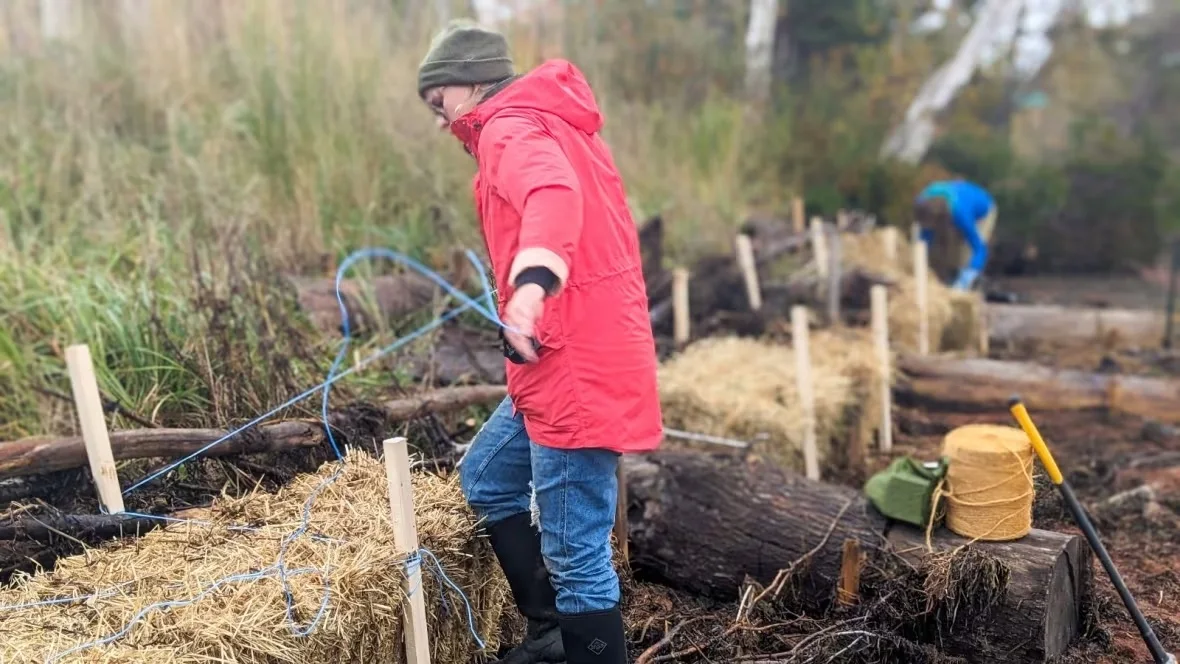
Kirsten Ellis says there are a few more demonstration sites in the planning stages. (Shane Hennessey/CBC)
She said her favourite part is how the project brings people together. "It sparks discussions and we can get really creative here as we're learning about what works and what doesn't."
'People are learning'
Halifax-based consultant Kirsten Ellis, who specializes in living shorelines and nature-based solutions, has been involved with the design and construction of the site.
"It's doing really well," said Ellis. "We've had a couple very significant storms very early in its life."
"Considering how young it is, it's held up very well."
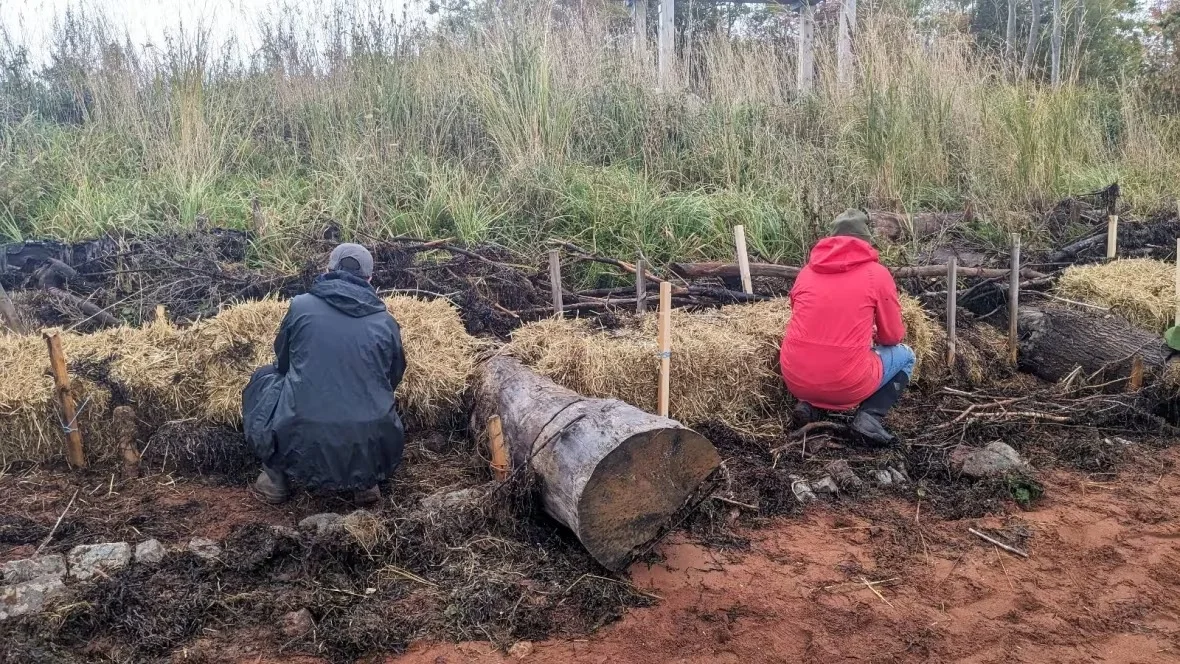
Volunteers work on preparing the living shoreline for the fall and winter storm season. (Shane Hennessey/CBC)
She said the maintenance work is a way to get the community involved. "People are learning and asking questions."
Over the 10 years she has been in the field, Ellis said she's seen a growing interest in living shorelines in the Maritimes.
"I think it's gone from a bit more on the fringe, a few people trying it, to now municipalities, towns trying it," Ellis said.
With more funding from various levels of government, "things have really ramped up and expanded," she said.
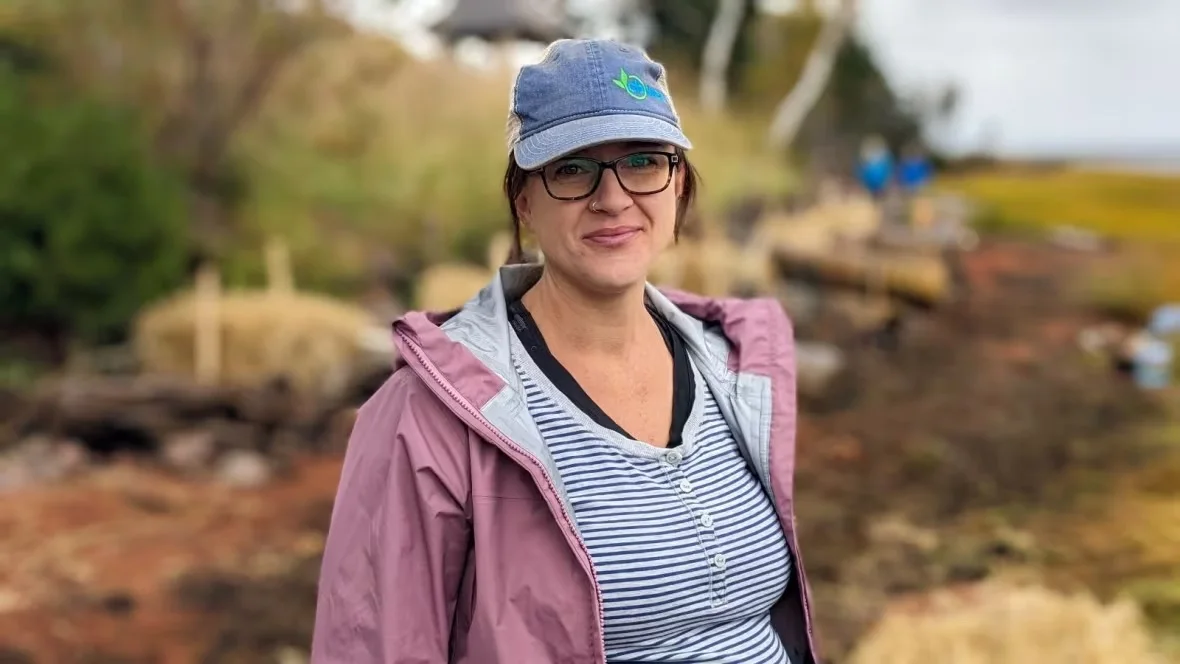
Kirsten Ellis is a coastal adaptation consultant with CB Wetlands and Environmental Specialists who specializes in living shorelines. (Shane Hennessey/CBC)
The demonstration project in Charlottetown is called a hybrid, because even though the materials are natural, there has been human intervention in how they are placed, which adds to the expense, Ellis said.
More funding allows groups to incorporate engineered elements into these hybrid projects — making them "better, more resilient and more effective," she said.
Lots of inquiries
Charlotte Large, a project manager for the P.E.I. Watershed Alliance, said the demonstration site at the QEH, as well as another at the Tea Hill Park in Stratford, are raising awareness.
Her group gets inquiries from private landowners too, she said. "Especially post-Fiona, they're very concerned about their coastlines and their properties — as they should be."
People ask how they can invest in nature-based solutions to protect their properties and how to foster their landscapes in a "healthy, sustainable way," she said.
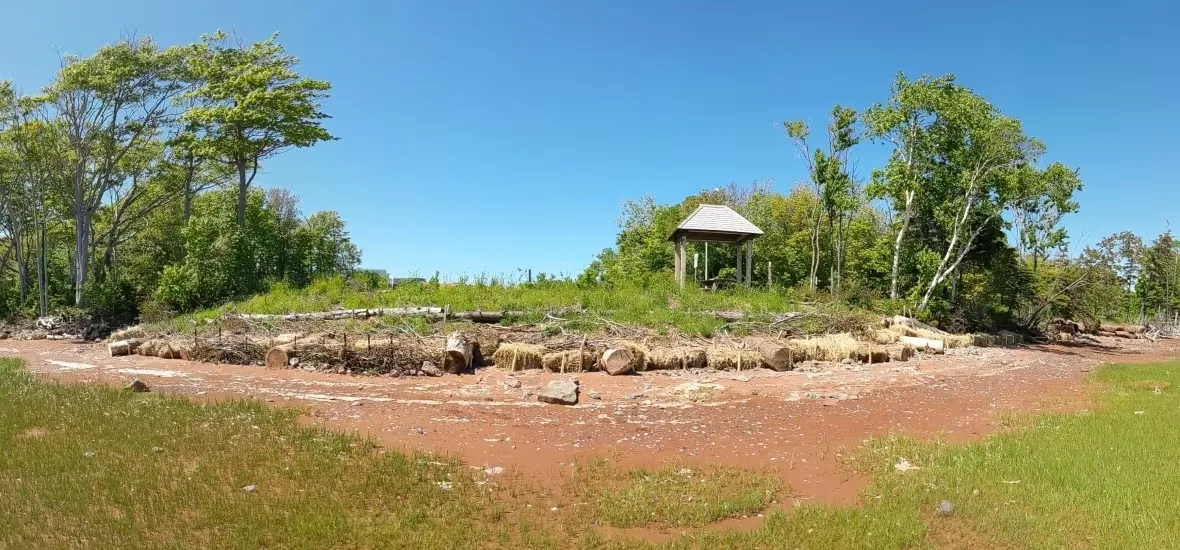
A view from the beach of the living shoreline along the Queen Elizabeth Hospital shoreline at Murchison Lane and Riverside Drive. (Submitted by Alistair Ozon)
But private projects won't necessarily take the same approach as the one in Charlottetown, Large said.
"Because the thing that we're doing here is very complex. it's a very large investment that's not necessarily appropriate to everyone's landscape."
Still, she's spoken to private landowners and gone to see their properties — advising them on how best to work within their budget, she said.
"A lot of this is very much watching, adapting, learning. That's sort of the main point of these demonstration sites, as well as public engagement to get people interested in learning about this."
WATCH: Halifax harbour turns pink as part of experiment
Thumbnail courtesy of Shane Hennessey/CBC.
The story was written by Nancy Russell and published for CBC News.








